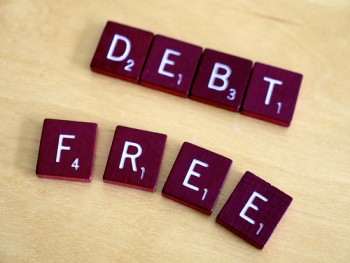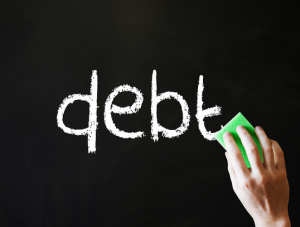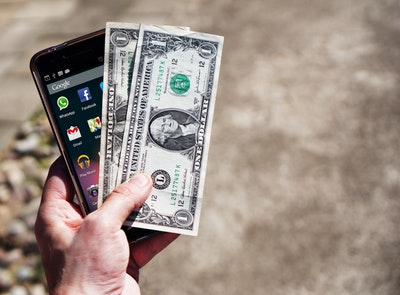7 Simple Steps To Say Goodbye To Bad Debts
 Debt is part of most people’s lives in one form or another. Mortgages, business loans, credit cards – all of them are seen as acceptable and help us live a higher standard of life.
Debt is part of most people’s lives in one form or another. Mortgages, business loans, credit cards – all of them are seen as acceptable and help us live a higher standard of life.
However, when things go awry, it can lead to severe problems. Bad debts can impact your life in a multitude of ways. You could lose your home, it can cause relationship problems, and it can feel like an impossible mountain to climb. But, it can be done.
In this guide, I’m going to take a look at the various things you can do to get yourself in a better financial position. While these ideas won’t result in an entirely debt-free life, they will give you some answers for easing the pain of your bad debts.
Because, in every case, it’s only those bad debts that are the problem. Take a look, see what you think, and I hope these ideas can help you get to a better place.
#1 Identify your Bad Debts
First of all, you need to move quickly to identify the debts that are hurting you the most. It isn’t necessarily your most expensive debts that need tackling.
It’s the debts with most interest that you should pay off first because they are the ones that will be costing you most, relative to what you have borrowed.
The best idea is to use one of the credit score agencies, like Equifax. You will receive a list with your credit details on them, a rating, and who you owe money to. Use it to sketch out an idea of what you should do first.
#2 Work Out what you can Afford to Pay Back
Next, you need to create a payback fund. You will need to draw up a budget, and attribute your money to all of your necessary bills and payments.
Your food, mortgage payments, utility bills and other things like that are all classed as essentials.
Now write down all of your extras that you spend on, such as entertainment, clothes, and sports memberships. Whatever you have left, is your payback fund.
#3 Boost your Payback Fund
If you want to clear your bad debts, you are going to have to make sacrifices. While that’s difficult to do with your mortgage and fixed costs, you can reduce your other spending.
Make sure that you are as energy efficient as possible to cut down your utility bills. Eat the supermarket alternatives to your favorite foods, rather than a brand name.
Cut back on your gym membership and workout from home instead. There are a lot of costs that the average family can scale back on, so see what you can do, and add your savings to your payback fund.
#4 Understand your Task in Hand
Now, all these cutbacks are going to hurt a lot. But you have to pay those debts back unless you want to go down the most serious route of bankruptcy or debt relief order.
You are going to have to draw from a certain amount of willpower; that’s for sure. But once you get started, you will begin to find it a lot easier.
Within a few weeks or so, you might even begin to realize just how wasteful you have been in the past.
#5 Get in Touch with your Lenders
 If you have bad debts, there’s a good chance that you have already been contacted by your lenders. Alternatively, you may have been avoiding them.
If you have bad debts, there’s a good chance that you have already been contacted by your lenders. Alternatively, you may have been avoiding them.
Now you have a plan, though, it’s time to communicate with them on your terms. Most respectable lenders will be happy to come up with a repayment plan with you so that they get their money back.
One thing to remember, though, is that being in debt is not against the law. Don’t be pushed into anything that you can’t afford, just because the lender says you have to pay more.
They have a regulatory obligation to work with you, not to put pressure on you. Any threats, accusations or persistent harassment should be passed onto the ombudsman.
You are also within your rights to be requested by letter only. As long as you keep up with the correspondence and pay back what you said you would, your creditor has a responsibility to lay off.
#6 Keeping your Payback Fund
As you slowly make headway across each of your debts, you should keep the same amount of money aside to make your payments. So, let’s say you are paying back five hundred pounds a month to pay back a debt of £3,000.
You will have paid back that debt within six months. Your next bad debt is worth £2,500, which you redirect your payments into. That’s cleared in five months. So, if your final debt is only £1,000, it will only be two more months before you have removed your bad debts completely.
From being in severe financial stress, getting your freedom back in just over a year isn’t bad going, is it?
#7 Using Debt to Pay Back Debt
In most cases, using debt to pay back debt may not be an efficient use of your money. However, if you can get a lower rate than you were already paying, then it is worth looking into.
Bear in mind, though, that just because you have a lower rate for your monthly payments, you could still end up paying more back if the term is longer.
Finding a lower rate with a shorter payback term is the absolute sweet spot, although this can be tough to get if your credit rating has been hit. At this point, you might be tempted by something like a payday, or direct loan.
There’s a guide to those over at www.cashfloat.co.uk. But, in short, if you do take out a payday loan, it’s best only to do so if you can pay it back immediately.
Are you having Debt Issues?
 Well, with any luck and a lot of dedication, I hope you will be able to pay off your bad debts in as quick a time as possible.
Well, with any luck and a lot of dedication, I hope you will be able to pay off your bad debts in as quick a time as possible.
It’s not going to be easy, especially if you have little funds to draw from. But, put yourself in the right frame of mind, and you will start to see results.
Feel free to share your thoughts, comments, and ideas below on how you plan to pay off your debts going forward.




Following those guidelines will definitely help with keeping up a good record. Thanks for the article, keep up the awesome blog!